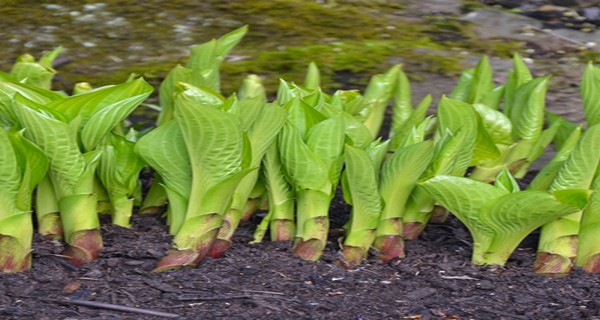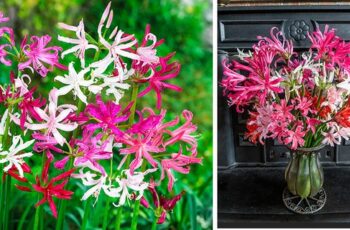Ad Blocker Detected
Our website is made possible by displaying online advertisements to our visitors. Please consider supporting us by disabling your ad blocker.
How To Keep Hosta Plants Beautiful & Healthy – All Summer Long!
It is indeed possible to maintain your hosta plants in strong, healthy, and beautiful condition throughout the long, hot summer months. Hostas are immensely popular shade-loving plants known for their lush and thick foliage, which adds vibrant colors and texture to any flowerbed. With an extensive variety of solid and variegated leaf patterns in shades of green, white, and even deep blue, they create a stunning sight, especially during their spring emergence.
However, as the growing season progresses, some gardeners face challenges as their hosta plants begin to show signs of wear and tear. The once gorgeous foliage can deteriorate into a clump of yellowing leaves by late July or early August.
But fear not! The good news is that with a little extra care, you can keep your hosta plants looking stunning all year round. Let’s explore three key secrets to maintaining your hostas’ beauty from early spring to late fall.
How To Keep Your Hosta Plants Beautiful In The Summer
1/ Fertilizing For Success
Hosta plants may not be heavy feeders, but they can greatly benefit from timely applications of fertilizer, especially if you want to ensure their strength and health during the hot summer months. There are three crucial moments to fertilize your hostas: early spring, early summer, and after they bloom in late summer. Each application serves a specific purpose for the plant.
Fertilizing your hostas in early spring contributes to the development of robust foliage and, more importantly, provides the necessary resources for blooming. During early summer, fertilization supports the overall health of the foliage and offers additional resources for the upcoming blooming phase.
However, if your main goal is to maintain the beauty of your hosta plant’s foliage, the third and final application of fertilizer holds the utmost importance. This should be done right after the plant completes its blooming cycle as it plays a vital role in restoring the energy lost during the blooming process.
Typically, this is the time when most hosta plants start to fade, but with an extra boost of energy from fertilizer, you can keep their canopy bright and colorful, lasting right up until the first frost. So, remember to give your hostas that extra care during their blooming cycle to enjoy their stunning appearance throughout the entire growing season.
Selecting The Best Fertilizer
- For optimal results, it’s recommended to use a balanced, all-purpose, slow-release fertilizer for all three applications. When selecting a fertilizer, look for a granular type with equal proportions of nitrogen, phosphorus, and potassium, ideally falling within the range of 5-5-5 to 10-10-10. This balanced blend will ensure a steady supply of essential nutrients to your plants throughout the growing season.
- As an additional boost, we highly recommend giving your hosta plants a dose of compost tea or liquid fertilizer right after they bloom. This is in addition to the granular fertilizer already applied. The liquid boost acts quickly as a fertilizer and is absorbed through both the plant’s roots and foliage. Since blooming demands considerable energy from the plants, this liquid supplement swiftly revitalizes them, providing the much-needed power-up they require. After this boost, the granular application further supports the plant, helping to maintain strong and healthy foliage for the remainder of the summer. The combination of these fertilization methods will contribute to the long-lasting beauty and vitality of your hosta plants throughout the season.
- Product Link : 10-10-10 All Purpose Granular Fertilizer
- Product Link: Liquid Fertilizer
2/ Deadheading Spent Blooms Early
As mentioned earlier, the tall, wispy blooms of a hosta plant consume a significant amount of energy from the plant. If left on the plant for too long, this loss of energy can cause the hostas to lose their vigor and appearance by mid-summer.
To ensure your plant’s foliage remains strong and healthy well into late summer and fall, one of the most crucial practices is to promptly remove blooms and their stems as soon as they start to fade. Allowing them to wither on the plant robs it of valuable energy that is vital for maintaining robust and green foliage.
By swiftly cutting back the stem and spent flowers to the base, the plant can redirect its energy towards continuous growth and sustaining excellent foliage. On a related note, if your main focus is on maintaining stunning foliage throughout the season, you have the option to remove the blooms before they even flower. Many gardeners, who highly value their hosta plant’s leaf structure over the blooms, choose not to allow the plants to flower at all.
Instead, they promptly remove the bloom stems as soon as they appear, enabling the plant to concentrate all its resources on developing a lush leaf canopy. By implementing these practices, you can ensure your hosta plants stay visually appealing with thriving foliage throughout the entire growing season.
3/ Locate Your Hostas For Success
The location where you grow your hostas can significantly impact the health of their foliage throughout the season. To ensure success, carefully choose the best spot for your hosta plants. Hostas are fond of shade, although they can tolerate some sunlight. The crucial factor is the type of sunlight they receive.
For optimal performance, it is ideal to provide your hosta plants with sunlight during the morning or evening hours. Avoid planting them in areas where they will receive direct afternoon sun. The mid-day sun is the hottest and can place intense stress on any plant, especially those that prefer shade. As summer reaches its peak heat, hostas exposed to mid-day sun struggle to endure the excessive temperatures.
To maintain your hostas’ foliage health and beauty, select a location that offers them the right balance of shade and filtered light, particularly during the morning and evening. This will ensure your hostas thrive and remain resilient throughout the hot summer months.
How To Divide Overgrown Hostas In Summer

How To Divide Overgrown Hostas In The Summer – Keep Your Hostas Beautiful!

